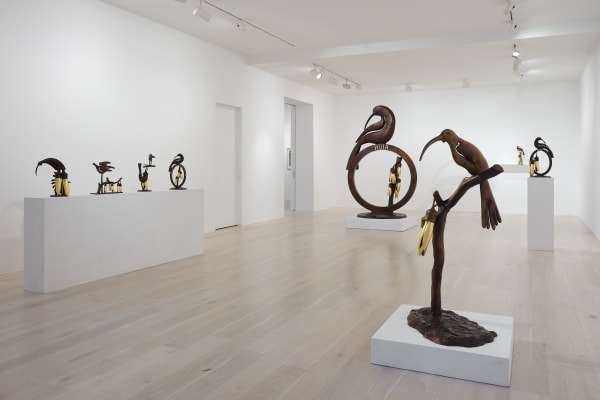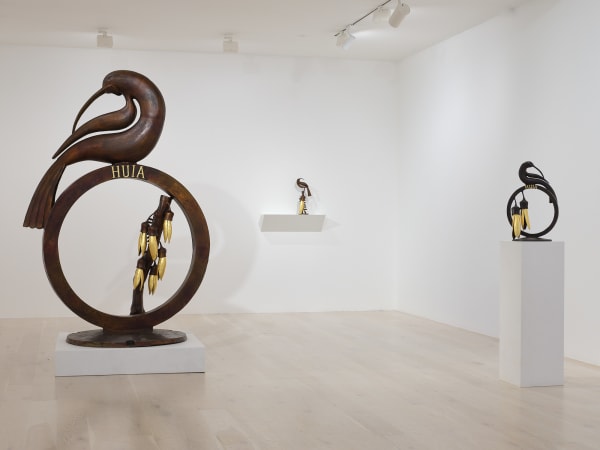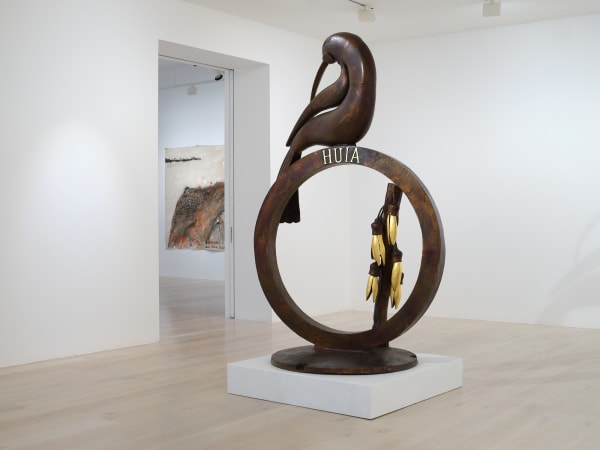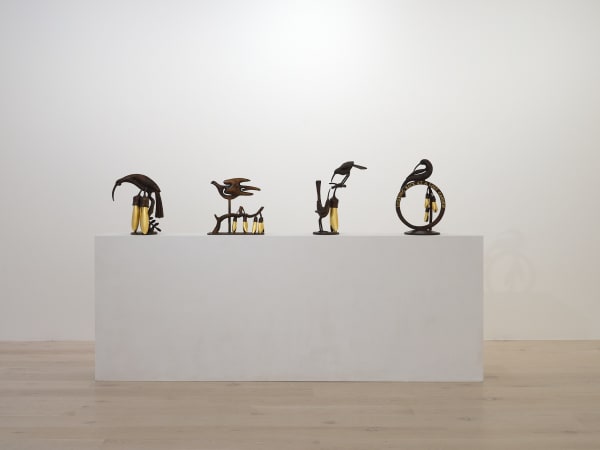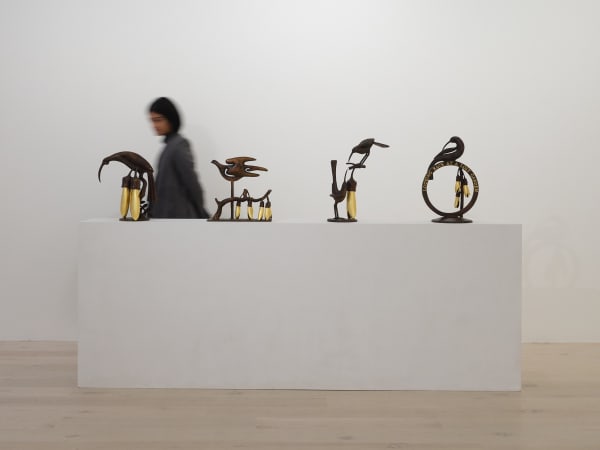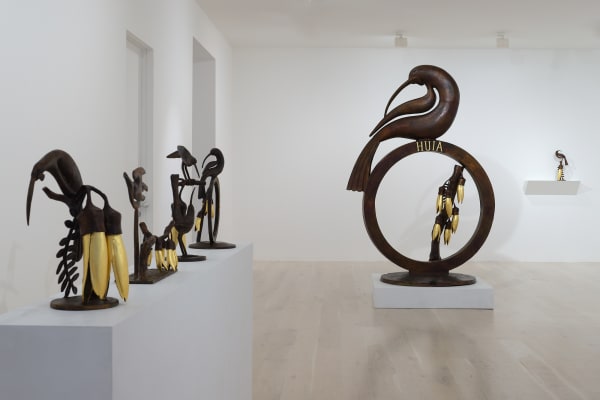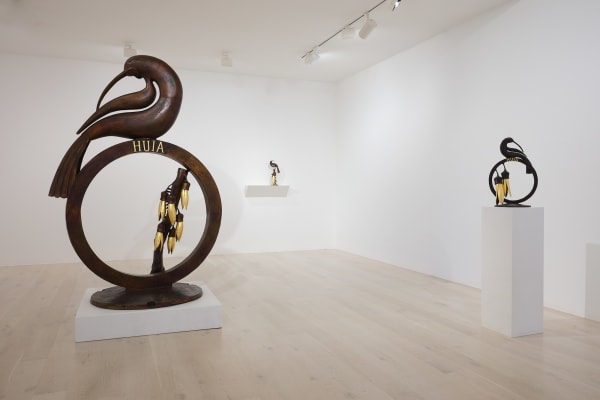Huia Sings Alone: Paul Dibble
Huia Sings Alone presents a new series of Dibble’s work. These sculptures reveal fresh responses to subject matter that the artist knows well – native birds and the flowers of the kowhai tree. In all but one of the works, the birds featured are huia, the famously regal and stunningly beautiful bird driven to extinction by early European settlers (the one exception features a kererū).
-
 Paul Dibble, Looking Back at the Lost Garden, 2023
Paul Dibble, Looking Back at the Lost Garden, 2023 -
 Paul Dibble, Dialogue of Two Huia model, 2022
Paul Dibble, Dialogue of Two Huia model, 2022 -
 Paul Dibble, A Small Piece of the Garden, 2023
Paul Dibble, A Small Piece of the Garden, 2023 -
 Paul Dibble, Huia Sings Alone, 2023
Paul Dibble, Huia Sings Alone, 2023 -
 Paul Dibble, Looking for a Lost Home, 2023
Paul Dibble, Looking for a Lost Home, 2023 -
 Paul Dibble, The Glow of the Kowhai, 2023
Paul Dibble, The Glow of the Kowhai, 2023 -
 Paul Dibble, The Lost Garden model, 2023
Paul Dibble, The Lost Garden model, 2023 -
![Paul Dibble, The Lost Garden [large], 2023](data:image/gif;base64,R0lGODlhAQABAIAAAAAAAP///yH5BAEAAAAALAAAAAABAAEAAAIBRAA7) Paul Dibble, The Lost Garden [large], 2023
Paul Dibble, The Lost Garden [large], 2023 -
 Paul Dibble, Woodpigeon flies Above a Kowhai Tree, 2023
Paul Dibble, Woodpigeon flies Above a Kowhai Tree, 2023
Paul Dibble is a leading figure of his generation, having created a rich body of sculptural works for public and private contexts over the course of decades. The artist is particularly well-known for his large-scale, cast bronze sculptures, though he is also well-versed in working on a domestic scale. Key themes in Dibble’s work include native flora and fauna, cultural history, architecture, and the human figure.
Huia Sings Alone presents a new series of Dibble’s work. These sculptures reveal fresh responses to subject matter that the artist knows well – native birds and the flowers of the kowhai tree. In all but one of the works, the birds featured are huia, the famously regal and stunningly beautiful bird driven to extinction by early European settlers (the one exception features a kererū). In Huia Sings Alone, Dibble presents a garden where kowhai trees bloom and huia flock, settling to eat nectar in a secluded wonderland. This is a land of abundance, a banquet, a world restored. The works are sculpted in bronze, with 24 carat gold sheet to produce the opulent golden flowers.
Paradise is often imagined in the past tense – not as something that surrounds us now, but as something lost. The idea of it can conjure yearning for a time of plenty in an unspoilt world – living lives of simplicity in harmony with nature. Early Aotearoa was paradise for both huia and kowhai. In the absence of predators, the huia could run riot. Even the kowhai had free rein, its tiny leaves outsmarting the moa who found it too laboursome to eat.
For this exhibition, Dibble reimagines the lost paradise of Aotearoa. His huia are mostly joyous, inhabiting a garden of golden kowhai, unaware that they are on borrowed time. Though there is a suggestion of what is to come. In the show’s namesake artwork, Huia Sings Alone, a single bird is perched on a sparse branch, on a small round base suggestive of a small island. It stands solitary, abandoned.
Huia and kowhai were both revered and feature in sacred myth. The kowhai, with its miraculous sudden flowering on leafless branches, seems symbolic of divine power. Kowhai trees near lakes and rivers create a riot of colour with the reflection doubling the golden glow. Huia feathers, stored carefully in wakahuia (carved treasure boxes) were worn as a sign of rank and mana. But such reverence can come at cost. The huia was hunted to extinction as those fascinated by its beauty and status sought to secure keepsakes.
Consequently, the works featured in Huia Sings Alone are both joyful and sombre. They reflect on the singular beauty and mythological significance of the huia, though also comment on the circumstances of its extinction. This tone, both celebratory and reflective, is captured in Dibble’s majestic bronzes.
Notes regarding editions of Paul Dibble's sculptures
Paul Dibble’s sculptures are made using the lost wax method, each cast by hand from a small foundry in Palmerston North by Paul Dibble, his wife and manager Fran, and a small team of skilled technicians. A sculpture will be the culmination of a series of smaller casts which are then welded together, piece by piece. This is a labour intensive technique, and it is the artist’s intention that the process is evident in the finished sculpture.
The same technique applies to Dibble’s editioned sculptures, each welded, patinated and finished individually. Dibble makes decisions intuitively at each stage of the making process and for this reason there will be variations in the individual editions of a set; no two will be identical. Patina application may be more fluid, or compositional elements may vary slightly in placement. These differences are characteristic of the artist’s ‘hands on’ technique, and only those works he considers successful and finished are signed and allowed to leave the studio.


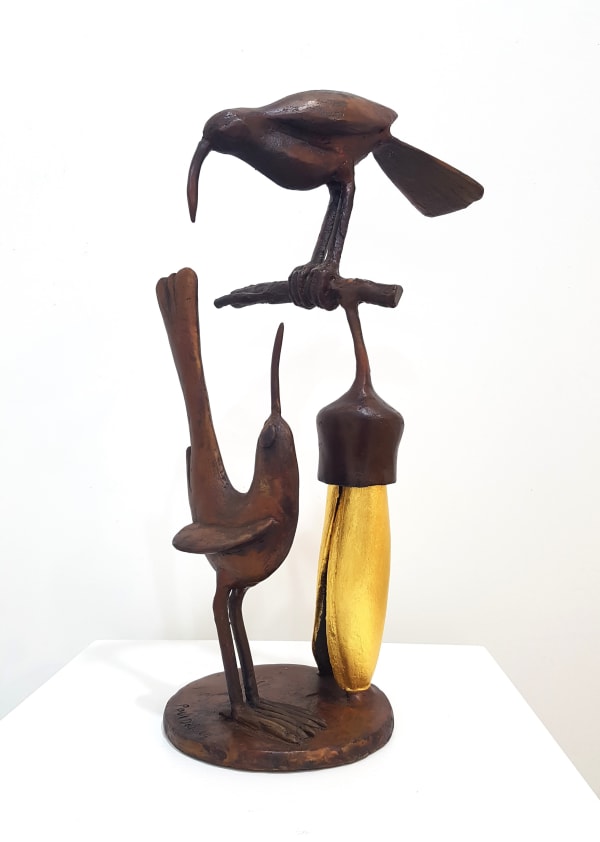

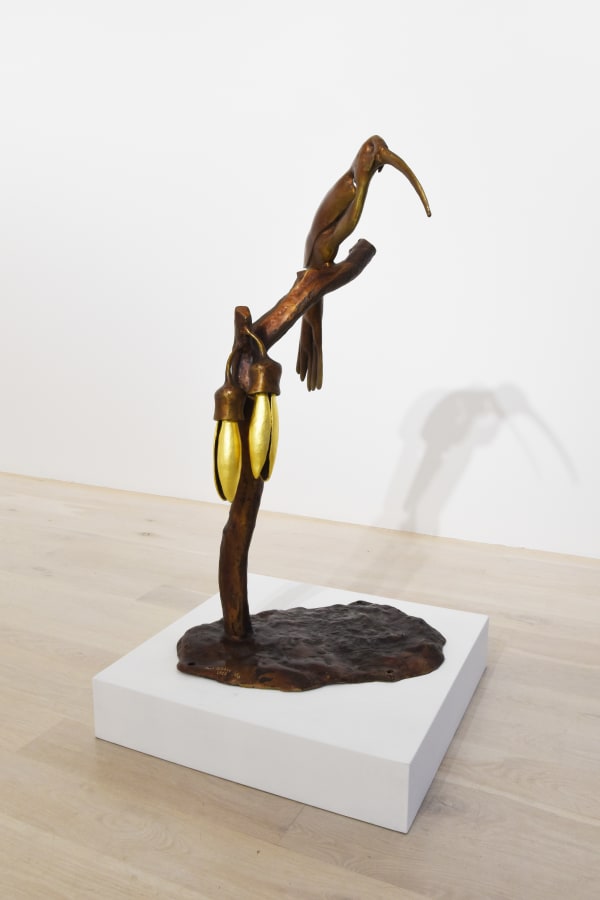



![Paul Dibble, The Lost Garden [large], 2023](https://artlogic-res.cloudinary.com/w_600,c_limit,f_auto,fl_lossy,q_auto/artlogicstorage/gowlangsford/images/view/754bd9ae3be4c37d196f1853387c818bj/gowlangsford-paul-dibble-the-lost-garden-large-2023.jpg)

